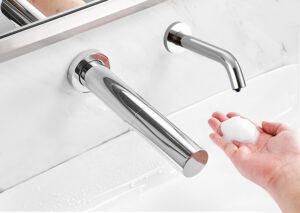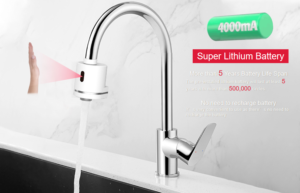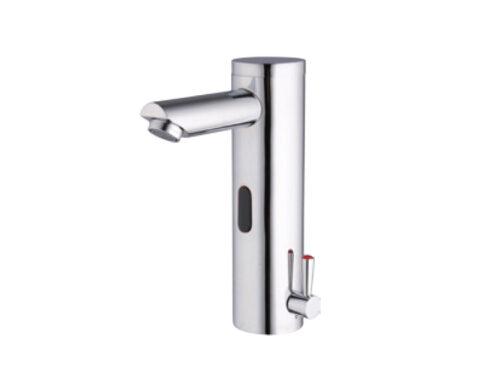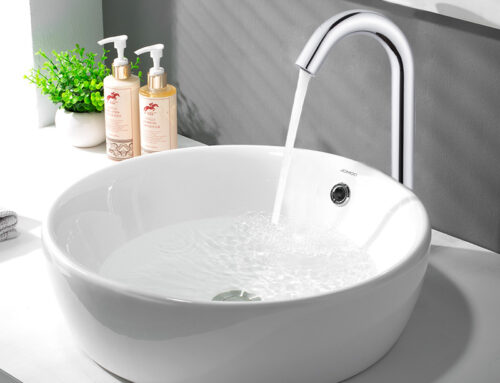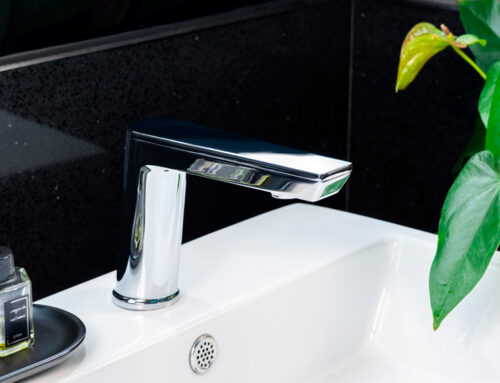For truly hands-off access to water, the first choice is touchless faucets! They are safe, convenient, and efficient to use. They prevent the spread of germs and viruses because of their contactless feature
Completely touch-free faucets will be the trend due to convenience and personal hygiene. Especially during the pandemic, the completely touch-free faucet can protect family members from cross-contamination. We are also further developing more functions to connect to the smart-home system for more convenience.
Touchless faucets deliver just the right amount of water at the right flow and temperature. Since they work by sensors and with pre-set water temperatures, you don’t have to worry about people scalding themselves or wasting water by leaving the tap on.
How Do Touchless Faucets Work
A touchless faucet ( also automatic tap, hands-free taps, electronic faucet, motion sensing faucet, sensor faucet, or infrared faucet) is a faucet equipped with a proximity sensor and mechanism that opens its valve to allow water to flow when the sensor detects the presence of a hand or hands. The automatic faucet closes its valve again after a few seconds or when it no longer detects the presence of hands. Most automatic taps are battery-powered and incorporate an active infrared sensor that detects hand motion.
Touchless faucet technology (also known as touch-free, sensor, and automatic) uses sensors, usually located at the faucet base or spout. In some faucets, there are additional sensors on top of the tap(like the below picture).
These sensors do not detect physical touch. Instead, they sense the presence of your hand or any other object in front of them. Most touchless faucets use an infrared light source and a paired infrared detector to do this. When you place your hand in front of the sensor, the infrared light reflects off your hand and back into the detector, activating the faucet.

